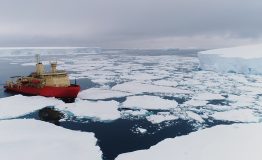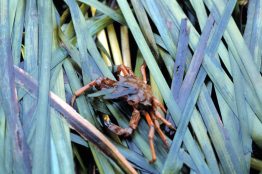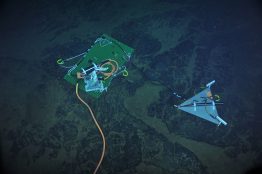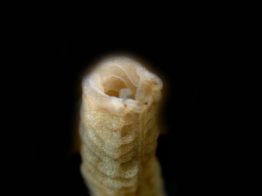A University of Washington oceanographer is chief scientist on a voyage in the waters around Antarctica as part of a major effort to monitor the Southern Ocean. Stephen Riser, a UW professor of oceanography, embarked Dec. 24 as part of the Southern Ocean Carbon and Climate Observations and Modeling, or SOCCOM, project to collect better data about the planet’s most remote ocean.
Read more at UW Today »Arctic sea ice loss impacts beluga whale migration
The annual migration of some beluga whales in Alaska is altered by sea ice changes in the Arctic, while other belugas do not appear to be affected. A new study led by the University of Washington finds that as Arctic sea ice takes longer to freeze up each fall due to climate change, one population of belugas mirrors that timing and delays its migration south by up to one month.
Read more at UW Today »Eelgrass in Puget Sound is stable overall, but some local beaches suffering
Eelgrass, a marine plant crucial to the success of migrating juvenile salmon and spawning Pacific herring, is stable and flourishing in Puget Sound — despite a doubling of the region’s human population and significant shoreline development over the past several decades. That finding surprised scientists who study eelgrass, which sprouts in the brackish waters close to shore and provides shelter and breeding habitat for fish and invertebrates.
Read more at UW Today »Underwater volcano's eruption captured in exquisite detail by seafloor observatory
The cracking, bulging and shaking from the eruption of a mile-high volcano where two tectonic plates separate has been captured in more detail than ever before. A University of Washington study published this week shows how the volcano behaved during its spring 2015 eruption, revealing new clues about the behavior of volcanoes where two ocean plates are moving apart. “The new network allowed us to see in incredible detail where the faults are, and which were active during the eruption,” said lead author William Wilcock, a UW professor of oceanography.
Read more at UW Today »Our closest worm kin regrow body parts, raising hopes of regeneration in humans
What if humans could regrow an amputated arm or leg, or completely restore nervous system function after a spinal cord injury? A new study of one of our closest invertebrate relatives, the acorn worm, reveals that this feat might one day be possible. Acorn worms burrow in the sand around coral reefs, but their ancestral relationship to chordates means they have a genetic makeup and body plan surprisingly similar to ours.
Read more at UW Today »





